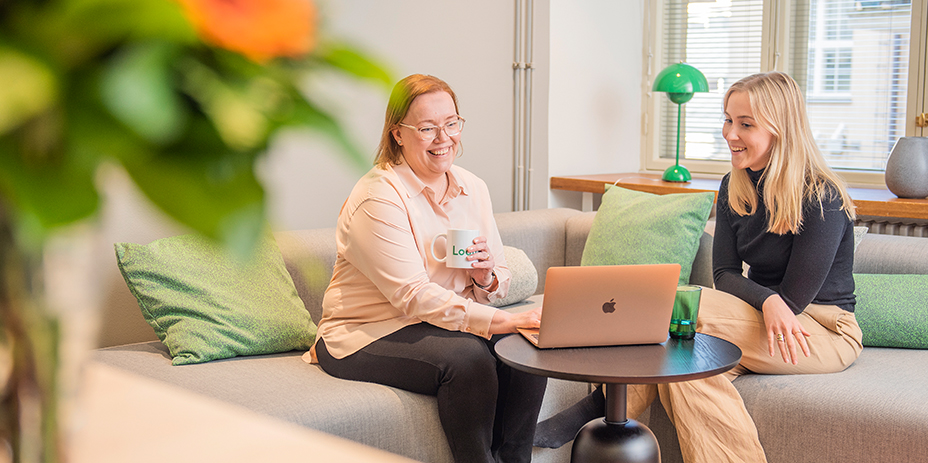
When it comes to presence, it is quality and not quantity that matters – here’s how to improve your presence at home and at work
What are the critical moments in presence, and how does it affect our brains and relationships? Neuropsychologist Heli Isomäki explains the meaning of presence accessibly and introduces a practical tool – the presence puzzle – which can be used to make life-changing improvements in both family life and working life.
A neuropsychologist and doctor of psychology who has worked as a mind and brain expert for more than 25 years, Heli Isomäki regards presence as a fundamental pillar of human brain health and the most important building block of wellbeing.
“Humans are social animals, we need presence in the same way as oxygen or food. However, the most important thing is that the presence is good and functional – in this case, quantity does not replace quality,” Isomäki emphasises.
The most crucial piece of the puzzle is emotions
Isomäki sees presence as a puzzle consisting of physical, cognitive and emotional presence. These elements pertain to how close we are to each other, how we focus on the encounter, and the emotional charge of our presence in the encounter.
“The quality of presence decreases if a piece is missing, but it isn’t black and white. If the cognitive and emotional presence is strong, a remote meeting can be good, even if the physical piece is missing. It is essential that there are as many factors of good quality involved as possible.”

As the most impressive piece of the puzzle, the psychologist raises emotions. According to her, the most important thing we can get from an encounter is good energy – and the biggest source of energy is emotions. Physical and cognitive presence do not improve energy levels, and unlike emotions and feelings, they do not catch on and accumulate.
A positive attitude is a tremendous force for change.
“And they do not contain the same potential for change. “A change of attitude and an innovative atmosphere created together can have life-changing effects on the entire work community,” Isomäki sums up.
The psychologist considers negative emotions, which are huge energy hogs, to be the biggest risk in the encounter.
Even the smallest change is effective
According to Isomäki, the brilliance of the puzzle stems from the fact that it works in the work community, family life and relationships. Once you understand how the equation works, it is easy to improve your presence, even with small changes.
As a voluntary action, focus is often the easiest aspect to start with. Physical presence is also a tangible thing that it is usually easy to try to change. The most challenging thing is influencing the atmosphere or emotions – they do not change overnight and often only improve as a result of the previous actions.

At the workplace, Isomäki would improve concentration by developing workspaces and working conditions, making meetings more efficient, clarifying instructions and emphasising the relevance of work. At home, the more small children there are in the family, the more she would invest in increasing physical presence. For them, the focus of presence is strongly on touch and physical proximity.
The most important factor in an encounter is eye contact.
“A child also easily senses and feels hurt if an adult is physically present, but not truly attentive.” Biologically, eye contact is the most important factor in an encounter – if you want to invest in a feature of the presence, focus on the gaze,” stresses Isomäki.
Listening beats talking
A psychologist who examines the elements of presence from a professional and research-based perspective emphasises listening more than talking in presence. She illustrates by saying that people often go to therapy for long periods and feel they benefit from it, although the therapist often only speaks a few words to them during meetings. The secret is that the therapist listens to them – giving them time and space to talk.
Isomäki considers listening the most valuable gift we can give to another person in today’s hectic world.
“This is easy to see for yourself. We usually prefer people who are interested in us, and who focus their full attention on us. Such a presence is the most nurturing and empowering.”
Regarding presence, we talk too much and listen too little.
The psychologist points out that today’s biggest barriers to presence are the lack of concentration and constant multitasking, which, studies suggest, is toxic to the brain. In the long run, brain function and performance will decrease and may result in ADHD-type, self-induced attention deficit disorder.
Isomäki reminds us that the matter is, however, in our own hands – it has been proven that the situation can improve significantly in just a few weeks if excessive phone use or multitasking is reduced.
Recognise the critical moments!
According to the psychologist, both at home and at work, it is important to recognise the moments when the other person expresses their need for your presence. A co-worker looks contemplative, a child tells about something that happened during the day, or a young person lingers in common spaces.
“Then it is important to pause and focus 100% on the encounter. Especially for children, the presence battery charges quickly when the encounter is of high quality, and the child feels they have been heard. If this doesn’t happen, the child may try to get attention in a negative way.”

According to Isomäki, such good short encounters, involving all three elements of presence, are much more relevant to a person than a huge amount of low-quality presence, where emotions and thoughts are elsewhere, and focus is on work matters or the phone.
“We could set a goal of creating such encounters in our daily lives,” she says.
Growth platform for development
The expert highlights one more important thing about presence – the sense of security it creates. Without it, all upper-level learning, creativity, and productivity suffer.
“In today’s society, we go to the top of the hierarchy of needs and invest immensely in self-development, which requires that the primary needs of our brains be met if we are to succeed,” she says.
According to Isomäki, a sense of security is a key primary need that arises through other people. Presence that fosters a sense of security is therefore a vital breeding ground for self-esteem, study success and career development.

According to the expert, creating a sense of security is simpler than is usually thought. Sometimes just an accepting and gentle look is enough – or a hug or shoulder to lean on. Or stopping and asking how the person is doing.
“These actions are often much more effective than someone giving cognitive instructions or facts. Soothing and positive encounters create an atmosphere where parents or supervisors are like strong and solid oaks, with branches under which it is safe to grow and experience successes and failures,” says Isomäki smiling.
Heli Isomäki is a specialist psychologist in neuropsychology, a specialist neuropsychologist for intensive rehabilitation and a doctor of psychology, who has worked in specialist healthcare in the private and third sectors and as an educator in the field for more than 25 years. Isomäki’s mission is to make psychological phenomena easy to understand and encourage people to change – two thirds of our mental wellbeing is in our own hands. According to Isomäki, the most important force for change comes from a high-quality presence between people.
Real estate investment company Sponda wants to shake up working life by highlighting the importance of the humankind’s most important value, presence. What can we achieve as individuals, communities and society if we are truly present in what we do? What happens if we lose our most important asset once and for all? In its communications, Sponda also shares concrete instructions for practising presence and reflective interaction, building an organisation characterised by a sense of presence, and designing premises that create a sense of community. Sign up for our newsletter to receive all content directly to your inbox. You can also find the publications on sponda.fi or on social media using the hashtags # lasnaolo and #FlipForPresence.
